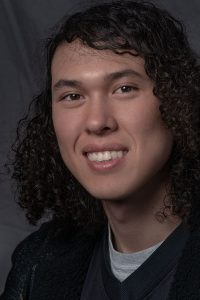“Diversity is the human experience.” These were the words said at the One Young World Summit in Bogota, Columbia by Apple’s Denise Young Smith. If it were just this that was said, the controversy that we are about to discuss may have never happened, but Smith continues to elaborate, “I get a little bit frustrated when diversity or the term diversity is tagged to the people of color, or the women, or the LGBT.” To many, these groups are the foundation of diversity. The issue of diversity has been a fairly prominent one in today’s world, primarily in the worlds of entertainment and in STEM. So, coming from the black female vice president of diversity and inclusion at Apple, this statement and the one following came as a shock to the worlds of technology and social justice.
“There can be 12 white blue-eyed blonde men in a room and they are going to be diverse too because they’re going to bring a different life experience and life perspective to the conversation,” said Smith. This rubbed many the wrong way. Despite the overwhelming lack of people of color, women and members of the LGBT community in the industry, to have the VP of Diversity in one of the biggest tech giants in the world say that she doesn’t plan on focusing on them came to disturb many.
Her comments received such backlash that shortly after she retracted them and made a public apology, “I regret the choice of words I used to make this point. I understand why some people took offense. My comments were not representative of how I think about diversity or how Apple sees it.” She went on to address the criticisms of her statements and ensure that Apple is dedicated to the classic definition of diversity, “Understanding that diversity includes women, people of color, LGBTQ people, and all underrepresented minorities is at the heart of our work to create an environment that is inclusive of everyone.” Even though I do not disagree with the latter comments in her apology and I do feel that it is important for minorities to be represented in the STEM fields, I find it unfortunate that Smith backtracked on her original stance.
I do believe that minorities are disadvantaged in terms of opportunity in entering STEM fields, and as a result more should be done to bridge the gap so that everyone can have the chance to be considered. However, I do think Smith’s definition is much more inclusive and helps us work more towards what the end goal of diversity should be. In entertainment, we should strive to achieve diversity so that the narratives we develop and consume are varied and enlightening. This could be the tales of the plights of women, LGBTQ and colored people; or the plight of the poor, mentally ill and persecuted.
The same principle applies to STEM. Having designers of different backgrounds means having designers with different perspectives and different solutions to the same problems. The diversity in engineering and technology is therefore much more advantageous when the designer has a more varied background. That background can be achieved through a designer’s experience with their race, their gender or their sexual orientation. However the experiences of others should not be counted out simply because they aren’t specific types of experiences. What one may have learned through his battle with mental illness is often different than what one may have learned from their experience with persecution due to their sexual orientation. That doesn’t make any one of these experiences more worthy than the other, but that they can lead to engineers who perceive alternatives that others may have never considered. This is the advantage that Smith’s definition of diversity should have honed in on.
Smith’s comments should not be seen as an exclusion of the traditionally diverse and excluded, but as an inclusion of others whose experiences may help lead to the innovations that define the future. When we think of diversity, we shouldn’t look at the surface but dig deeper. A person’s experience are what defines that person and is what truly makes them diverse and different from their peers. Those experiences could be influenced by their identity, and they should be considered as much as any other. In the end, if we want competent, innovative and diverse entertainers, scientists, engineers and designers — it’s time that we look further and examine our human experience.
letters@chronicle.utah.edu



